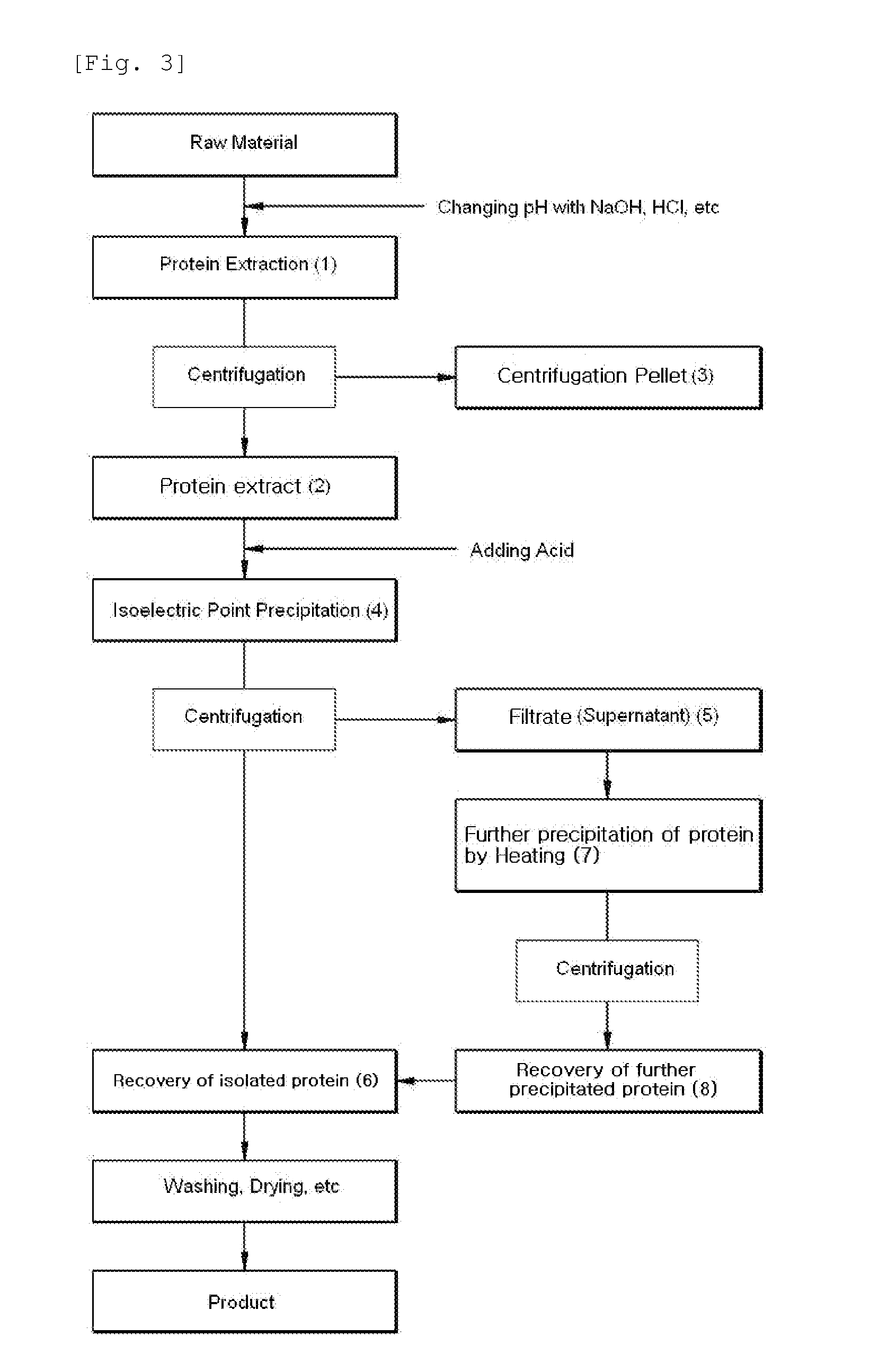Method for Separating Protein from Food
a technology for separating protein and food, applied in the field of protein separation, can solve the problems of low yield, high studies about increasing protein yield, so as to reduce the cost of treating waste water, improve the yield of protein separated, and improve the yield
- Summary
- Abstract
- Description
- Claims
- Application Information
AI Technical Summary
Benefits of technology
Problems solved by technology
Method used
Image
Examples
example 1
Separation of Protein from Rice Bran by Using Iso-Electric Point Precipitation and Heating Process
[0053]The separation of protein by using an iso-electric point precipitation was performed with 5,000 g of defatted rice bran (crude protein content: 990 g) as a raw material. The protein was extracted by adding 5 times water to 5,000 g of defatted rice bran while maintaining at pH 9 and stirring for 1 hour under the condition of 30° C. Thus, supernatant and pellet were separated by centrifuging the obtained protein extract for 10 minutes at 8,000 rpm. The supernatant was taken for use and then the protein in the supernatant was precipitated while maintaining at pH 4 and stirring for 30 minutes (the acid precipitation process). Again, it was centrifuged at 8,000 rpm for 10 minutes. The centrifugation pellet (White protein coagulation) produced from the above process was taken (Protein coagulation A) and the remainder centrifugation supernatant (Protein filtrate) was heated at 60 to 145°...
example 2
Separation of Protein from Soybean by Using Iso-Electric Point Precipitation and Heating Process
[0057]The protein separation by using an iso-electric point precipitation was performed with 5,000 g of defatted soybean (clude protein content: 990 g) as a raw material. The protein was extracted by adding 10 times water to 5,000 g of defatted soybean while maintaining at pH 9 and stirring for 1 hour under the condition of 30° C. Thus, supernatant and pellet were separated by centrifuging the protein extract obtained for 10 minutes at 8,000 rpm. The supernatant was taken for use and then the protein in the supernatant was precipitated while maintaining at pH 4 and stirring for 30 minutes (the acid precipitation process). The protein solution that was changed to a white color at the condition of pH 4 was again centrifuged at 8,000 rpm for 10 minutes. The centrifugation pellet (White protein coagulation) produced from the above process was taken (Protein coagulation A) and the remainder ce...
PUM
| Property | Measurement | Unit |
|---|---|---|
| temperature | aaaaa | aaaaa |
| pH | aaaaa | aaaaa |
| pH | aaaaa | aaaaa |
Abstract
Description
Claims
Application Information
 Login to View More
Login to View More - R&D
- Intellectual Property
- Life Sciences
- Materials
- Tech Scout
- Unparalleled Data Quality
- Higher Quality Content
- 60% Fewer Hallucinations
Browse by: Latest US Patents, China's latest patents, Technical Efficacy Thesaurus, Application Domain, Technology Topic, Popular Technical Reports.
© 2025 PatSnap. All rights reserved.Legal|Privacy policy|Modern Slavery Act Transparency Statement|Sitemap|About US| Contact US: help@patsnap.com



